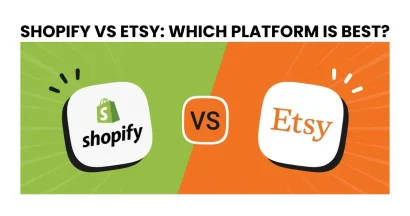If you’re a writer with a finished ebook in hand, you’re probably wondering how to turn those digital pages into profit.
The good news is that the world of online ebook publishing has never been more accessible.
Whether you’re a seasoned author or a first-time self-publisher, there are platforms out there designed to help you reach readers across the globe.
In this guide, we’ll break down five of the best platforms to sell ebooks online, and discuss how to protect your work from plagiarism for marketing your book to ensure it doesn’t get lost in the digital crowd.
Ready to start selling? Let’s dive in!
Eduma – Education WordPress Theme
We provide an amazing WordPress theme with fast and responsive designs. Let’s find out!
5 Best Platforms To Sell Ebooks Online
The following are platforms where you can sell ebooks online easily and conveniently, without needing to know about coding:
WordPress
If you want to sell ebooks online, a website using WordPress is a great way to achieve that.
WordPress is a user-friendly content management system (CMS) that allows you to create a website without needing any coding knowledge.
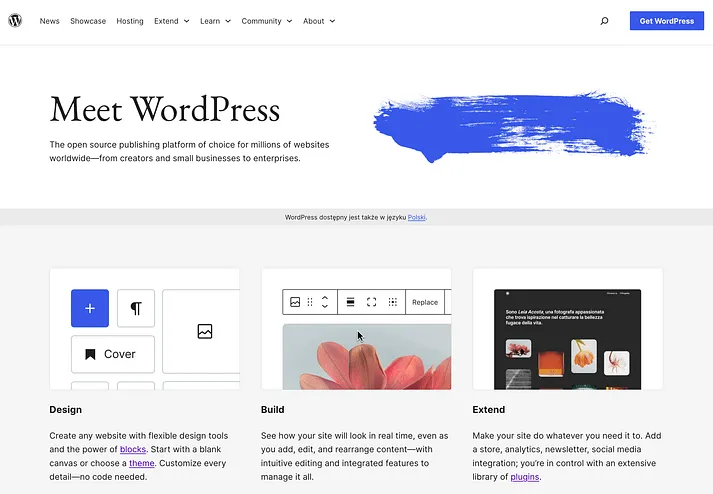
Start by getting a web hosting plan, like Bluehost, which is a popular choice.
After setting up your WordPress website on the hosting plan, create a basic website structure.
Then, you can install a WordPress plugin called Easy Digital Downloads, which gives you the necessary tools to sell ebooks online.

Once Easy Digital Downloads is activated, go to the Downloads > Setup section in your WordPress dashboard and click on Get Started.
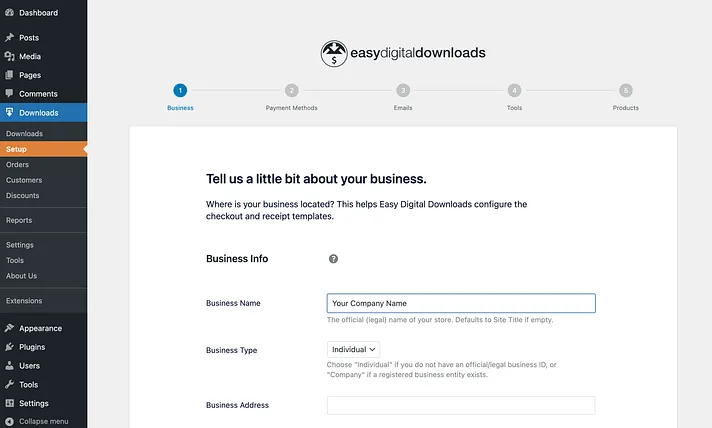
Fill in the required information about your business and link it to a payment gateway like Stripe, which is required for Easy Digital Downloads.
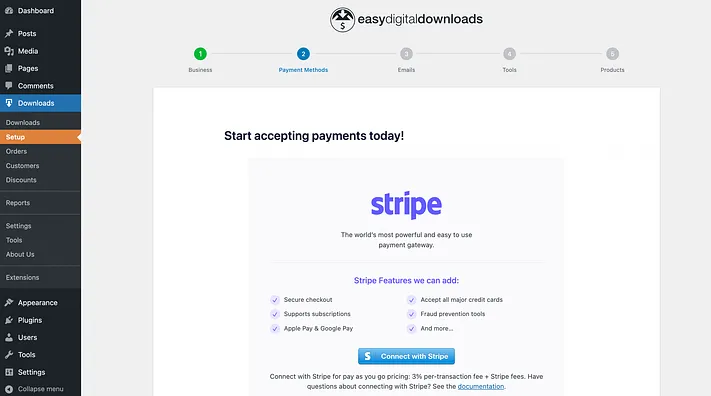
Configure your confirmation email to inform customers of successful purchases. Lastly, create your first product by adding your ebook file and completing the process.
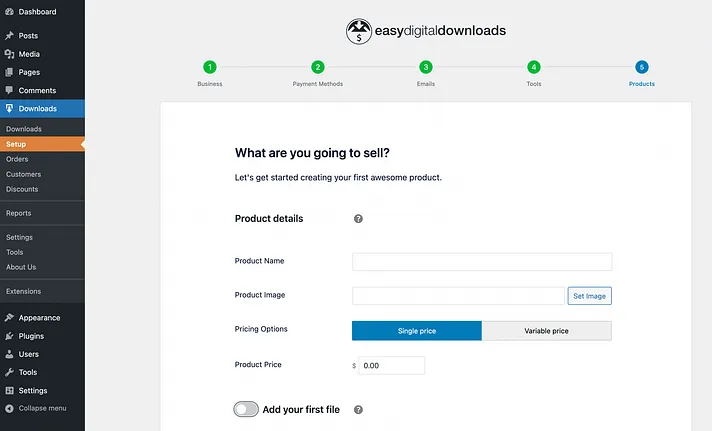
Pros:
- Cost-effective solution
- Simple setup
- Flexible website customization
Cons:
- Requires using multiple services like web hosting, WordPress, Easy Digital Downloads, and Stripe
Fees:
- Web hosting costs, starting as low as $3 per month
- WordPress and Easy Digital Downloads are free
- Stripe charges 2.9% + 30¢ per successful card charge
Best for:
- Beginners want a complete website for their ebooks, offering customization options and easy website and blog-building tools.
Shopify
Shopify presents another option for selling ebooks online. It’s a comprehensive website builder, eliminating the need for external web hosting providers.

Begin by visiting the Shopify website and clicking on the “Start free trial” button.
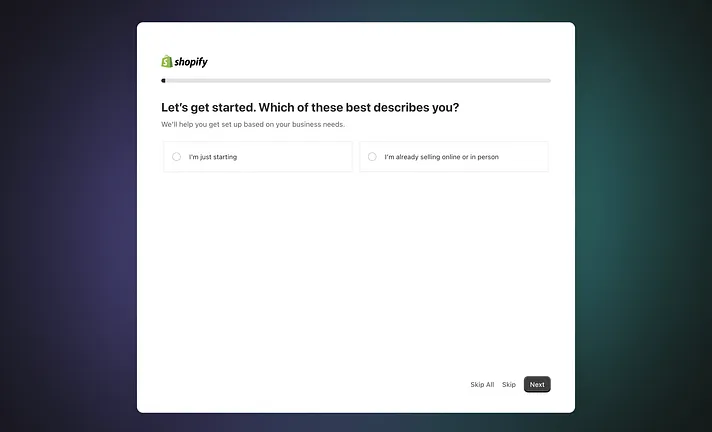
The setup wizard will inquire about your selling experience and desired sales channels.
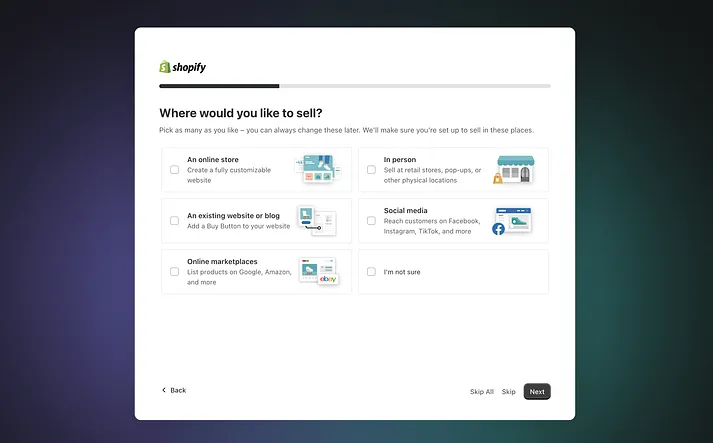
Select the “Digital products” option to indicate you’ll be selling ebooks.
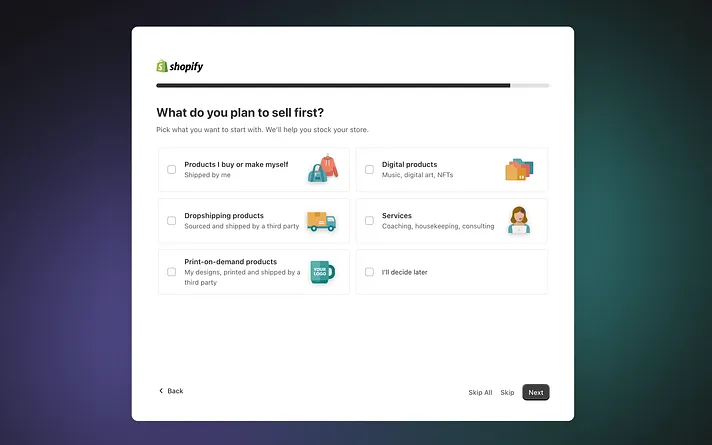
Follow the prompts to create your Shopify account, which will grant you access to the Shopify dashboard.
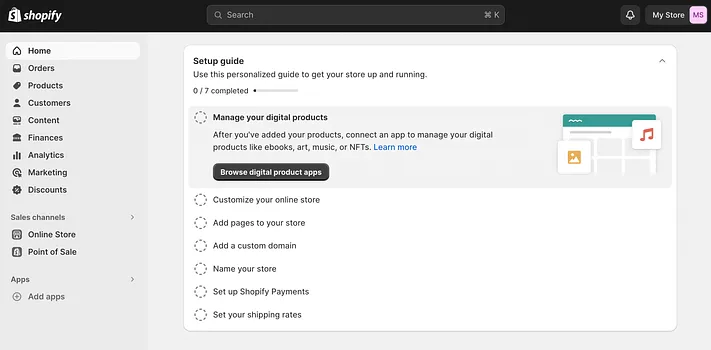
Within the dashboard, a seven-step process guides you through setting up your site for selling ebooks.
For a more comprehensive guide, refer to our detailed Shopify tutorial.
Pros:
- Complete, all-in-one platform
- Allows selling on multiple platforms, including your online store, existing website, and social media
Cons:
- Higher starting prices compared to other platforms
- Some learning curves associated with the user interface
Fees:
- Shopify monthly plans start at $39 per month
- Additional transaction fees of 2.9% + 30¢ per purchase
Best for:
- Those who prefer a streamlined, all-inclusive solution
- Users with existing websites (non-WordPress) who want to add “buy buttons” or sell on various platforms
Amazon Kindle
Amazon Kindle stands as another compelling choice for selling ebooks online.

To utilize this platform, you’ll need to sign up for Kindle Direct Publishing (KDP).
Head over to the KDP website and click on “Join KDP.”
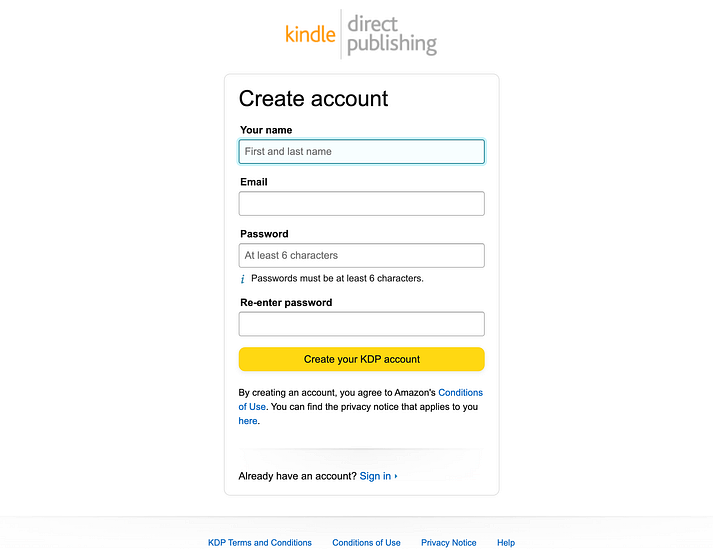
Provide basic information such as your name, email, and password, then follow the prompts to complete the registration process.
While the process may vary slightly, detailed instructions for publishing with KDP are available on their website.
Pros:
- Potential to reach a global audience
- Promotional opportunities available with specific plans
- No requirement for a separate website
Cons:
- Lower royalties on certain plans
- Restrictions on ebook pricing
Fees:
- Royalty rates can be either 35% or 70% depending on various factors like location, book size, and pricing preferences
Best for:
- Aspiring authors aiming for worldwide ebook sales
- Individuals seeking the built-in advantages offered by Amazon, such as marketing tools
Smashwords
Smashwords presents a distinct approach to selling ebooks online compared to previously discussed platforms.
While WordPress vs Shopify cater to general e-commerce, Smashwords focuses solely on ebooks.

To sell on Smashwords, you’ll need to create an account with its parent company, Draft2Digital.
Visit their website and click “Sign Up,” providing basic information like your name, email, and password.
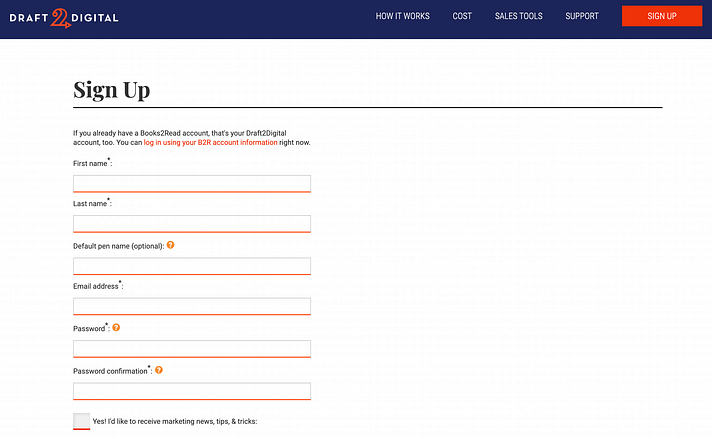
After accepting the terms of service, you’ll receive a verification email. Confirm your account, log in, and click “Add New Book,” followed by “Start eBook.”
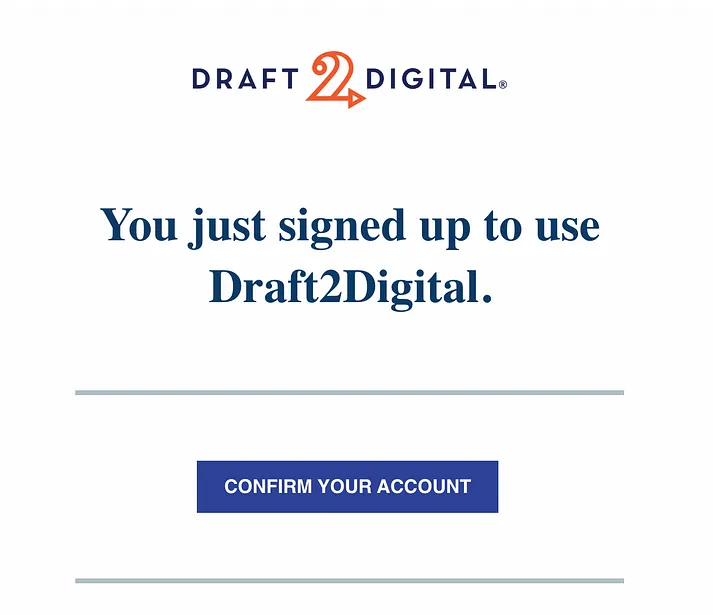

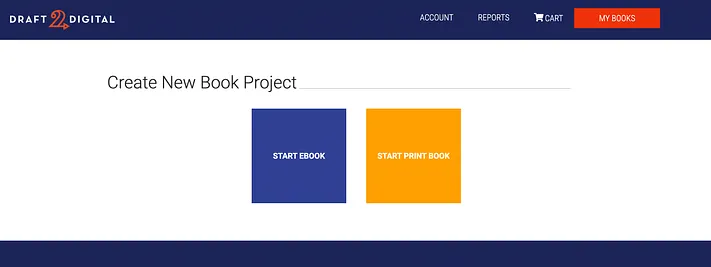
Fill in the necessary details under “Create New eBook” and click “Start eBook” again.
This is where you’ll upload your manuscript, select a release date, write a book description, and more.
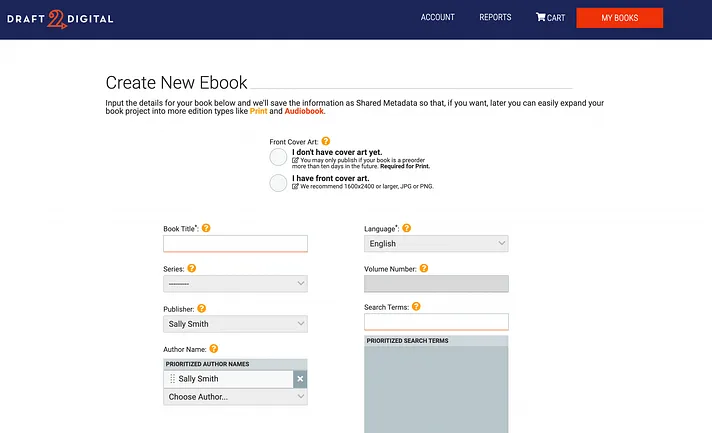
Click “Save & Continue” and follow the straightforward process guided by Draft2Digital.
Choose your vendors, ensuring you select Smashwords, and set a price for your ebook.
Pros:
- Authors retain complete ownership of their rights
- Option to list your ebook on other platforms like Amazon, Apple Books, and Barnes & Noble
- No need to create a separate website
Cons:
- Higher commission fee on sales
Fees:
- Draft2Digital charges a 10% fee on all sales for listing on Smashwords
Best for:
- Authors with ebooks specifically designed for e-readers
- Those who want to sell their ebooks across multiple sales channels
Gumroad
Gumroad is another option for selling ebooks online.
It’s an e-commerce platform that allows you to build a standalone storefront or integrate one into your existing website.

To get started, head to the Gumroad website and click “Start Selling.” This will prompt you to create a Gumroad account, which is quite simple.
You can either use a username and password or connect using a social media account, Google, or even Stripe.

Once you click “Create Account,” you’ll gain access to the Gumroad dashboard.
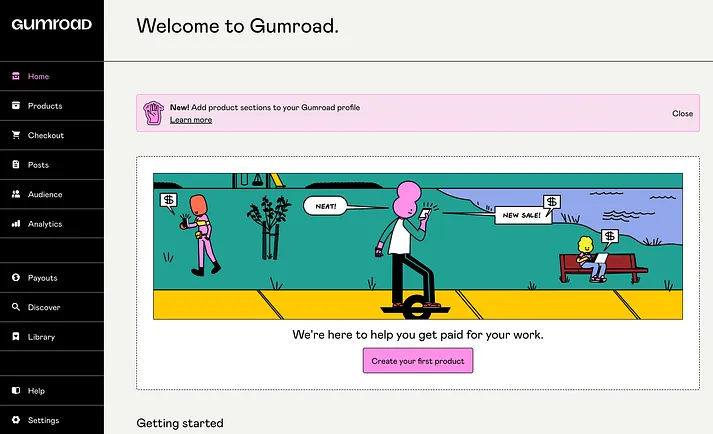
You can follow the “Getting Started” checklist, which outlines essential steps like customizing your profile, gaining your first follower, creating your first product, configuring payouts, and more.
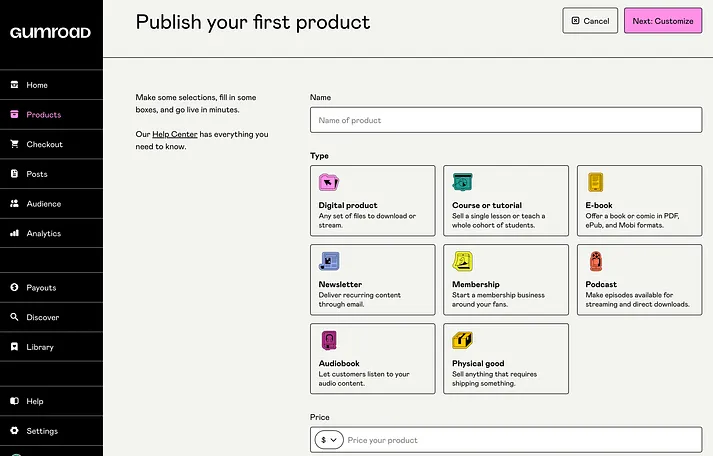
Alternatively, you can click on “Create your first product” directly. Here, you can name your product, choose the product type, and set a price.
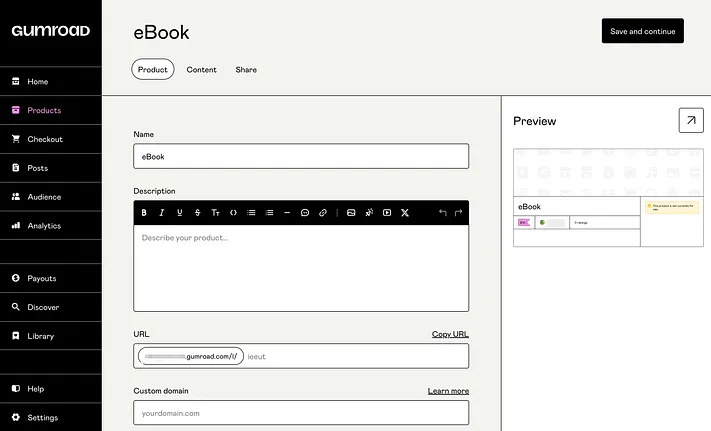
Click “Next: Customize” to configure additional product details.
Once satisfied, click “Save and continue” to complete the process. Finally, publish and share your product with your audience.
Pros:
- User-friendly storefront
- Quick and easy setup
- Includes a free custom domain
Cons:
- Significant fees on sales
Fees:
- No membership fees
- 10% commission on all sales
Best for:
- Creators who want to sell ebooks directly to their audience, without needing a full-fledged website.
Final Thoughts
In conclusion, creating an ebook is accessible to everyone, and various online platforms can help you sell your ebooks effectively. Whether you prefer a comprehensive eCommerce website or a simple storefront, there are options available for beginners and experienced sellers alike.
If you are seeking a customizable platform, WordPress and Shopify are excellent choices. For a hassle-free setup and a straightforward storefront, Gumroad is a great alternative. For authors specifically, Smashwords and Amazon Kindle cater to your needs.
Read More: 8+ Best Web Design Courses Online
Contact US | ThimPress:
Website: https://thimpress.com/
Fanpage: https://www.facebook.com/ThimPress
YouTube: https://www.youtube.com/c/ThimPressDesign
Twitter (X): https://twitter.com/thimpress
